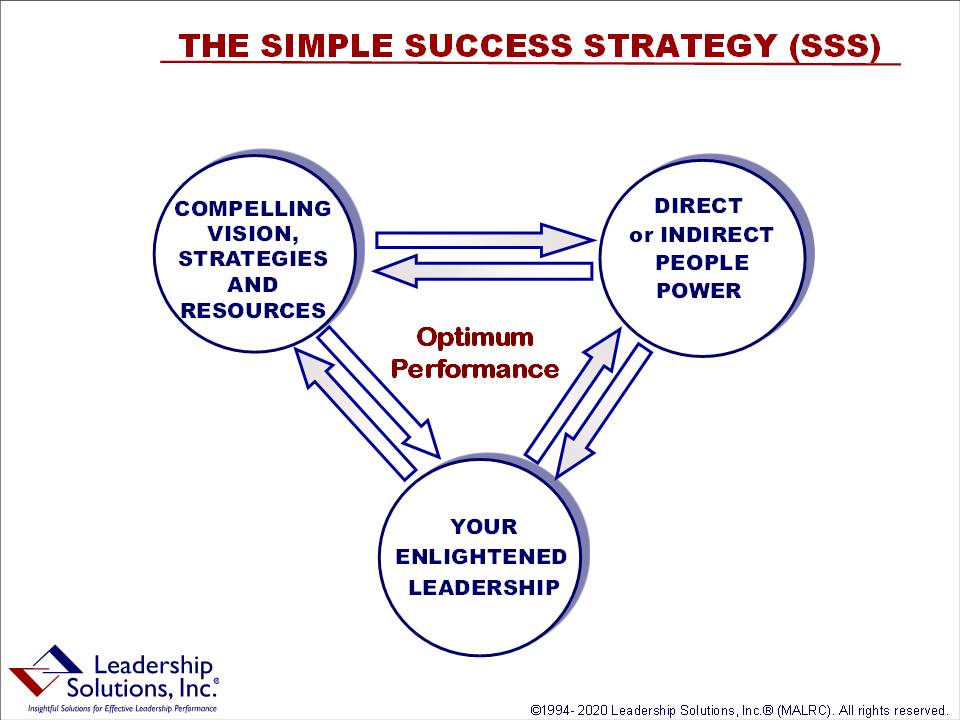by Peter A. Arthur-Smith, Leadership Solutions, Inc®
“Productive strategic thought, Mahan pointed out a century ago, requires us to stop grubbing in the machine shops of detail and get up somewhere where (we) can take a bird’s eye view of military truths, and see them in the their relations and proportions,” said Alfred Thayer Mahan – naval leader and historian 1840-1914. From article by Richard Aldous – professor at Bard College – in the Wall Street Journal, September 2015.

How many of you aspire to be that super strategist in leading your team or venture? When Kevin McCarthy, an aspiring Congressional House leader, was asked in 2015 what he would do differently from John Boehner the resigning House Speaker, he more than once reiterated his intention …”to develop strategies to win.”
Despite the good intentions of many executives this writer has interacted with, it would seem their biggest challenge in developing compelling strategies is twofold: Devoting the time required and utilizing an effective-insightful framework to develop such strategies. McCarthy didn’t get his shot at leading any House members with appropriate strategies until 2019, so we can only hope that you and he will now:
» Devote the Time Required – For the sake of your venture, you have to “stop grubbing in your machine shop” – see opening quote – in order to strategize and lead your organization. Some of you cannot avoid that because you just enjoy being in the weeds. For those of you who can, it requires two things: having capable people around you and possessing the will and interest to set aside strategy time.
Too often this writer finds many executives bogged down in the day-to-day weeds because they don’t have sufficient confidence in their immediate team members. Sometimes this is well-founded because they inherit either under-educated or over-promoted key players. In each instance, they, like you, need to develop a 6-12 month individual growth initiative with each player.
You can then work closely with each one during that period to ascertain whether they are stepping-up or standing still. If it’s the former, then you should build upon their potential through developing a joint, compelling career strategy. If it’s the latter, then you should negotiate a more suitable role for them or pursue a “dignified” exit strategy.
» Set Aside Strategy Time – Initially it’s likely you will turn to traditional strategic planning, without realizing that it’s outdated and not sufficiently adroit enough to handle the pace of our media-age. Although it fixates on the four steps of SWOT – Strengths, Weaknesses, Opportunity and Threats – users ultimately primarily concentrate on two of these dimensions: “weaknesses” and “threats” because that is our prevailing nature. It is especially true when it comes to the bottom-line and retaining control over events… both are killers of sustained team motivation within themselves due to the fear-factor.
A positive alternative is Strategic Positioning: either in the form of a Simple Success Strategy (SSS) – see above – or a Strategic Framework (SF). An SSS is three dimensional – with its compelling Vision, related Strategies and Resources; Direct or Indirect People involvement; and your own Enlightened Leadership. Such a strategy tool is particularly useful for start-ups, operational teams or any breakthrough activity. It’s designed to provide focus and progress over the near-term.
An SF on the other hand is truly four dimensional – compelling Vision-Purpose; essential Know-how; vital Resources (including leaders and people); and related Objectives-Outcomes. Without the right know-how and resources, it is extremely difficult to accomplish the framework’s first and last components – “vision-purpose” and “objectives-outcomes”. An SF is utilized with fast growth and sizeable organi-zations to take them on a journey with associated milestones. They do their best to avoid goals because, as in sports, when we reach a goal we come back to the start line again and everyone begins over once more. Such a mode loses considerable amounts of momentum – another downside of strategic planning. Every time there’s a hiatus in momentum you are at risk of losing people’s interest and focus.
Ultimately, as a super-strategist you have to decide what works best for you. However, you are likely to let yourself and your team down if you don’t utilize the best approach available. Traditional strategic planning falls short in so many ways that you will increasingly find fewer successful people utilizing it. For those who are natural strategists, strategic framing (SF) enables them to gain a much stronger intuitive feel for their venture, its marketplace and the various constituents involved. Once you have that intuitive-feel, you are in a much better position to become a super-strategist. (NOTE: If you wish for more information on these alternative techniques, contact the author.)
To find out more about your position and pathfind approach, talk with:
